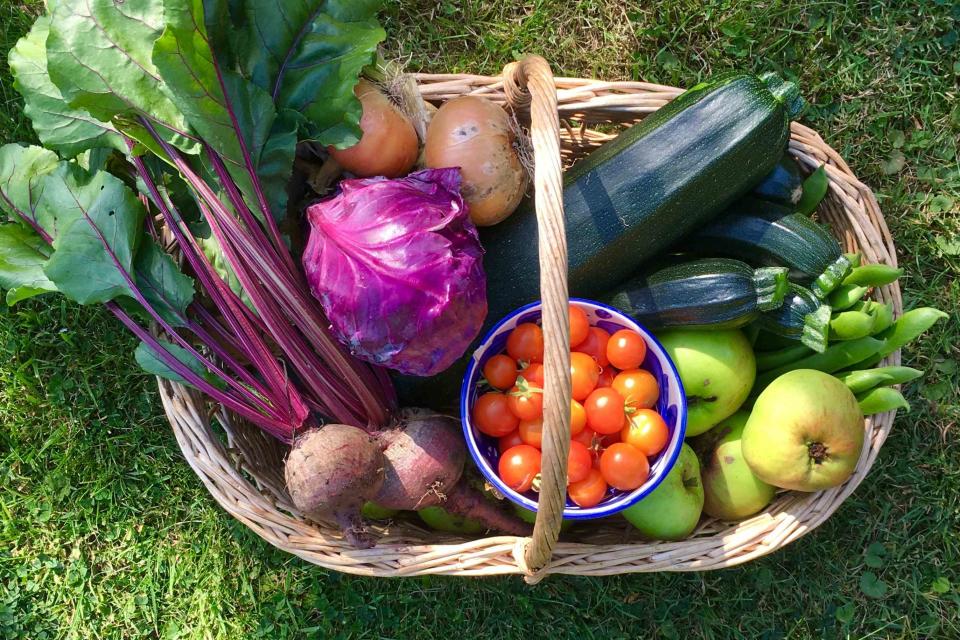7 Vegetables That Shouldn't Share a Garden Bed
Keeps these plants away from each other to ensure a healthy crop.

Stork Pics/Getty Images
Fresh, healthy garden veggies are what every home gardener wants, which is why it’s so important to know which types should be planted next to each other, and which ones need to stay separate. We spoke with the experts at Love & Carrots, a woman-owned urban farming company, to find out which vegetable combinations shouldn’t share a garden bed and why.
Potatoes and Tomatoes
Potatoes and tomatoes are both nightshades and can really impact one another’s growth cycle if planted together. “Potatoes are planted early in the spring and reach their highest disease risk early in the summer, right when tomatoes are getting started,” says Ruby Dessiatoun, Love & Carrots Senior Farmer. “Planting potatoes and tomatoes next to each other increases the risk of tomatoes getting potato diseases right at the time it is too late to replant.”
Related: How to Grow Tomatoes Indoors, According to Expert Gardeners
Garlic or Onions and Legumes
Planting garlic or onions with peas and beans in the same garden bed can really risk the chances for thriving legumes. According to Dessiatoun, “alliums, like garlic and onions, put off sulfur compounds into the soil” which can “stunt legumes like peas and beans” so they don’t reach their full potential.
Garlic and Onions
Speaking garlic and onions, “they are both heavy nitrogen feeders,” says Dessiatoun. “Unless regularly fertilizing when planting, two heavy feeders next to each other can cause them to rapidly deplete soil nutrients and compete with each other for resources.”
Broccoli and Tomatoes
Broccoli is typically planted in early spring, which means it will likely be ready once you’re ready to plant your tomatoes. However, Dessiatoun says that doesn’t mean it’s a good idea to plant them together. “There is some belief that planting tomatoes near your broccoli and other cruciferous vegetables will lead to stunted tomato plants,” she says. “This may be because of accumulated sulfur compounds in the soil.”
Oregano and Squash
Dessiatoun explains that “not only would oregano be easily swamped out by a giant, fast-growing squash plant,” but both have different watering needs, which can be hard to tend to in the same garden bed. “Oregano is a perennial that requires very little water when established,” she says. “Squash is an annual with giant leaves that becomes dehydrated quickly and needs much more water than an oregano would tolerate.”
Potatoes and Cucumbers, Squash, or Melons
“Potatoes are planted early in the season and are well-established by the time cucumbers, squash, and melons are ready to go into the ground,” says Dessiatoun. “As the plants start to die back at the end of their lifecycle, they are prone to fungal diseases like Alternaria leaf spot, which can jump from the potatoes to the just-getting-started cucurbits.”
Related: How to Grow Potatoes in Your Home Garden
Fennel and Tomatoes
Fennel isn’t the best option to plant next to your tomato plants because the compounds it puts out can stunt the other plant's growth. In fact, these compounds from fennel can negatively affect a wide variety of plants. Dessiatoun adds that “fennel should also not be planted near cruciferous vegetables like broccoli and cabbage.”
How to Care for Your Vegetables
Sunlight
To get most out of your veggie garden, you’ll want to provide proper plant care starting with the right amount of sunlight. “For best success, most vegetable crops need at least 6-8 hours of sunlight,” says Carly Mercer, Vice President of Love & Carrots.
“Fruiting crops like tomatoes, squash, and eggplants are best with closer to 8 hours of sunlight, same with roots like carrots and beets. Herbs and leafy greens can produce with slightly less light, in the 5-6 hour range.”
Fertilizer
When you fertilize is also important. Mercer recommends “fertilizing in the spring with a granular fertilizer higher in nitrogen, and a balanced granular fertilizer mid-summer to promote fruiting.”
Soil
She adds that well-draining soil is best, and any perennial herbs, such as rosemary, sage, oregano, thyme, and chives should be grown outside of your vegetable beds. “We recommend raised beds for growing vegetable crops because they allow you to have more control over the soil mix and drainage, they are easier to maintain and keep weed-free, and they provide a nice deep base of soil for vegetable roots.”
Water
As for a proper watering schedule, Mercer says watering every other day in the spring is key, but any extended drought in the summer may require watering up to twice per day. “Ideally the soil in your vegetable beds should be the same dampness level as a wrung-out sponge,” Mercer says. “We use drip irrigation hooked up to automated timers in our gardens, which we recommend for most efficient watering at the soil line, getting the water directly to plants' roots.”
Related: The Best Time to Water Grass for a Greener Lawn—and Less Water Waste
For more Real Simple news, make sure to sign up for our newsletter!
Read the original article on Real Simple.

